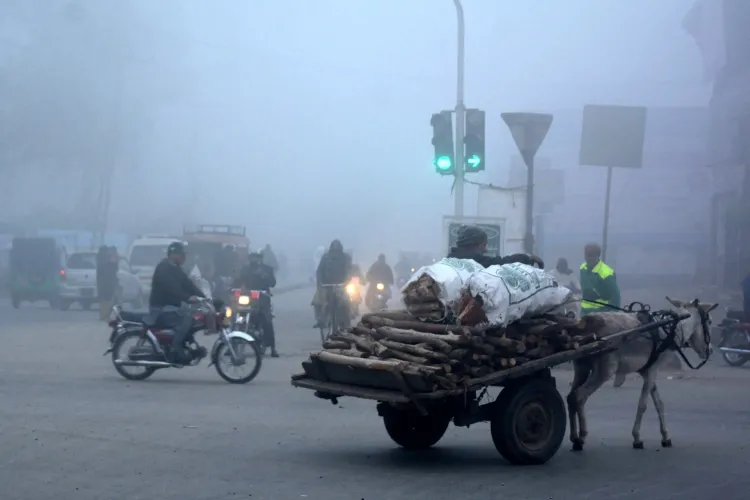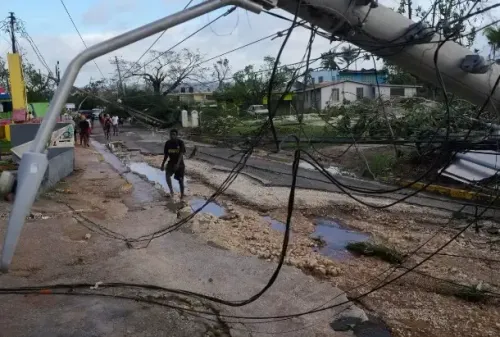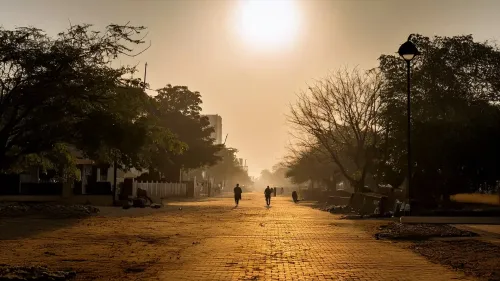Is Lahore, Pakistan still the world's most polluted city?

Synopsis
Key Takeaways
- Lahore's AQI exceeds 563, indicating hazardous air quality.
- Faisalabad's AQI reached 1037, significantly above WHO guidelines.
- Punjab government has implemented an emergency pollution control plan.
- Health experts advise wearing protective gear outdoors.
- Continuous violations of EPA regulations hinder pollution control efforts.
Islamabad, Oct 29 (NationPress) Lahore, Pakistan, continues to dominate the global pollution rankings with an alarming Air Quality Index (AQI) exceeding 300, as reported by the Swiss air quality monitoring service, IQAir. On Wednesday, dense smog enveloped the area, local media sources indicated.
At approximately 10:30 am, Lahore's AQI surged to 563, categorizing it as 'Hazardous'. The primary pollutant, PM2.5, was recorded at 357, as reported by The News International. Additionally, Karachi, another major city in Pakistan, ranked among the top ten most polluted cities worldwide, landing in the seventh position with an AQI of 154.
In a concerning development, Faisalabad in Punjab registered an astonishing AQI of 1037 and PM2.5 levels at 595.2, which is a staggering 119 times above the World Health Organization (WHO) guidelines. Multan and Peshawar also reported significant AQI levels of 292 and 290, respectively, highlighting the severity of the air quality crisis in Pakistan.
In response, the Punjab government has implemented an 'emergency plan' to combat pollution, which includes measures against agricultural fires, smoke-emitting vehicles, and deploying anti-smog guns in critical areas. These guns are currently operational in identified hotspots within Lahore, aimed at curbing particulate matter pollution. However, experts emphasize the need for long-term regional collaboration and rigorous emission controls for effective improvement.
Health professionals advise the public to wear masks and protective goggles when outdoors to mitigate exposure to hazardous air. Prolonged contact with such elevated pollution levels can lead to respiratory issues, throat irritation, and eye infections, particularly affecting vulnerable groups like children and the elderly. Authorities recommend minimizing outdoor activities and keeping windows shut, especially during peak smog hours.
Despite claims from authorities regarding pollution control measures, violations of the Environmental Protection Agency (EPA) Standard Operating Procedures persist. Numerous smoke-emitting brick kilns remain operational in Batapur and surrounding areas of Lahore, releasing thick fumes into the atmosphere. Additionally, construction material trucks are frequently seen operating without tarpaulins, exacerbating the pollution crisis.








